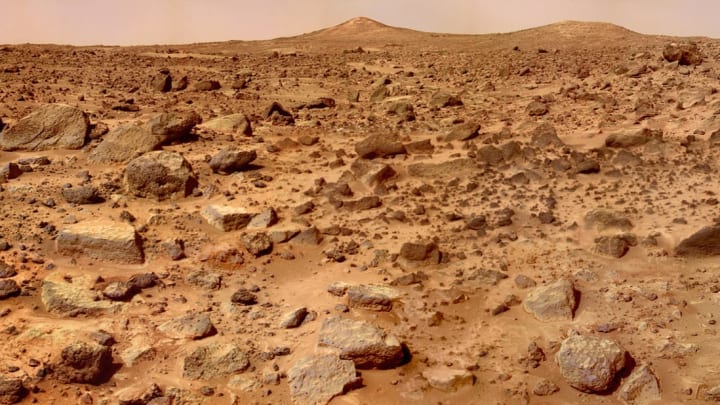While NASA is inching closer to landing humans on Mars, a team from Japan and the U.S. is working on exporting something else to the red planet: robot bees. As Co.Design reports, the engineers believe their hive of drones, dubbed Marsbees, could be used to explore the surface of Mars autonomously.
The project is one of a handful being funded by NASA in 2018 as part of the space agency’s Innovative Advanced Concepts program. According to the initial designs, the Marsbees would collect data and images from Mars just like the Curiosity and Opportunity rovers do now. But the drones' small size and large numbers give them a few key advantages.
The Marsbees would be carted onto the planet by way of a conventional rover that acts as a roaming beehive. The bumblebee-sized drones would use flapping apparatuses the size of cicada wings to fly around Mars, capturing data individually or swarming together to analyze larger swaths of land. If one robot fails, there would be more to make up for the missing sensor, and after gathering enough information they could return to the ground-based hub to recharge and relay the data back to Earth.
The team still needs to perfect a prototype before the swarms of Martian bees can become a reality. Wing size is a crucial factor, since the atmosphere on Mars is thinner than it is on Earth. Once they have that design element in place, the engineers still need to prove their drones can take off, land, navigate through the air, and complete missions. They hope to tackle each of those points in the first phase of the project using a $125,000 grant from NASA.

[h/t Co.Design]
